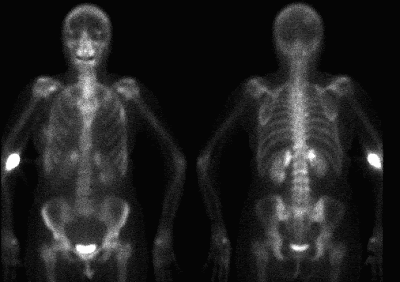Breast cancer is a condition in which the cells of the breast undergo a malignant growth. The malignant growth of the cells results in a group of cancerous cells (also called malignant tumor) which may spread into surrounding tissues or even to distant parts of the body. This deadly disease can occur in both men and women. However, men are less likely to be affected by it.
To cure the disease, doctors usually recommend their patients to take any or a combination of these treatment options: radiation therapy, targeted drugs, chemotherapy, hormonal therapy, and surgery to remove a part or the entire affected breast. Sometimes, even after the cancer cells are successfully removed, the disease may re-occur. On the other hand, the cancer can spread to other areas of the body, making it a metastatic breast cancer.
When a person reaches the metastatic stage, it means that the cancer cells have spread way beyond the affected breast. This condition happens when the cells break away from the cancer in the breast. The spread of the cells can occur in lymphatic vessels or blood vessels which may build up a new cancer deposit.
Metastatic breast cancer is also called secondary, invasive, or advanced breast cancer. At this stage, the cells can even be found in the liver, lungs, bones, and brain. Often the disease does not spread to these areas altogether but the location of the spread varies between sufferers. Moreover, it can happen before or after the treatments given to the patient.
When the cancer cells have spread to the liver, usually the patient suffers from symptoms such as tiredness, weight loss, appetite loss, and uncomfortable feeling around the liver area (the right side of the stomach). Some can also suffer from jaundice while others may develop swollen stomach due to fluid build up in the liver. On the other hand, when the cells have reached the lungs, symptoms include dry cough, shortness of breath, pain in the chest, and feeling of heaviness in the chest.
The spread of breast cancer to the bone can elicit symptoms including constant pain in the affected bone which is worsened during movements and creates uneasiness during night sleep. When it has spread to the brain, usually the patient will experience persistent headache, vomiting, and nausea. If the cancerous cells attack a particular part of the brain, other symptoms such as seizures, weakened limbs, or blurry vision may also occur. However, it is also worth noting that these symptoms can be a warning signs of other diseases. At any rate, you should consult a doctor should you experience any of these symptoms.
By David Dodiros
To cure the disease, doctors usually recommend their patients to take any or a combination of these treatment options: radiation therapy, targeted drugs, chemotherapy, hormonal therapy, and surgery to remove a part or the entire affected breast. Sometimes, even after the cancer cells are successfully removed, the disease may re-occur. On the other hand, the cancer can spread to other areas of the body, making it a metastatic breast cancer.
When a person reaches the metastatic stage, it means that the cancer cells have spread way beyond the affected breast. This condition happens when the cells break away from the cancer in the breast. The spread of the cells can occur in lymphatic vessels or blood vessels which may build up a new cancer deposit.
Metastatic breast cancer is also called secondary, invasive, or advanced breast cancer. At this stage, the cells can even be found in the liver, lungs, bones, and brain. Often the disease does not spread to these areas altogether but the location of the spread varies between sufferers. Moreover, it can happen before or after the treatments given to the patient.
When the cancer cells have spread to the liver, usually the patient suffers from symptoms such as tiredness, weight loss, appetite loss, and uncomfortable feeling around the liver area (the right side of the stomach). Some can also suffer from jaundice while others may develop swollen stomach due to fluid build up in the liver. On the other hand, when the cells have reached the lungs, symptoms include dry cough, shortness of breath, pain in the chest, and feeling of heaviness in the chest.
The spread of breast cancer to the bone can elicit symptoms including constant pain in the affected bone which is worsened during movements and creates uneasiness during night sleep. When it has spread to the brain, usually the patient will experience persistent headache, vomiting, and nausea. If the cancerous cells attack a particular part of the brain, other symptoms such as seizures, weakened limbs, or blurry vision may also occur. However, it is also worth noting that these symptoms can be a warning signs of other diseases. At any rate, you should consult a doctor should you experience any of these symptoms.
By David Dodiros



